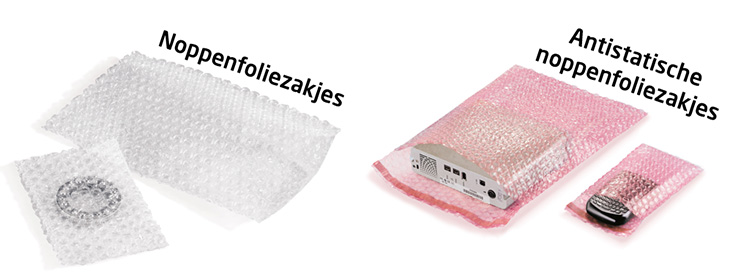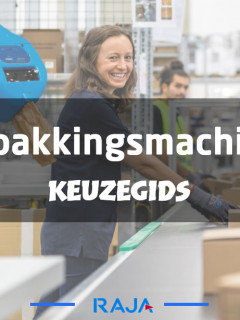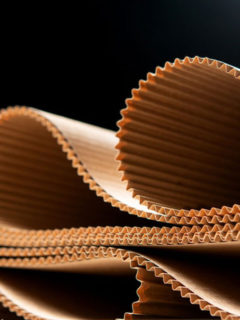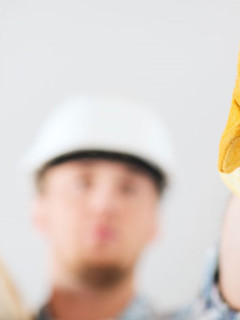Bubble wrap has been the usual ‘go to’ for protecting fragile products for years. But we note that this is quietly starting to change. More and more users are also seeing the benefits of packing their products with foam. So what are the differences between foam and bubble wrap and under what forms of packaging material can you use them? You’ll find out all about it here.
1. Which material is right for you?
Both foam and bubble wrap have all the basic properties to provide excellent protection for your products during storage or transport. Depending on your packaging needs, you can make the following distinctions :
- Bubble wrap is an excellent material for absorbing shocks and filling empty spaces in a box.
- Foam is best used when you want to pack products with a fragile surface securely (e.g. glass, porcelain and electronics). This way you avoid any risk of prints and scratches.
| Bubble wrap | Foam | |
| Light in weight | X | X |
| Does not leave prints | X | |
| Lint and dust-free | X | |
| Scratch-free | X | |
| Optimal air suspension | X | |
| Fill voids in your box | X | |
| Pack smaller items | X |
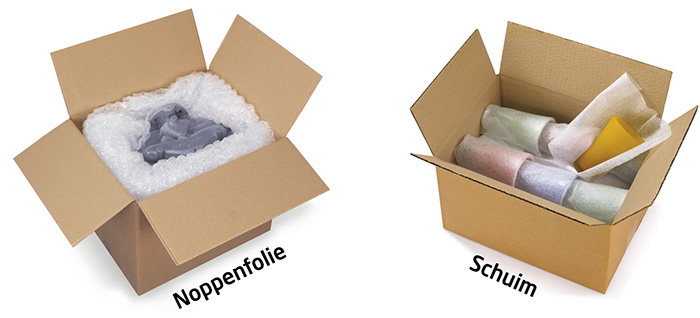
2. Pack with foam: work scratch and dust-free
Foam packaging is the little brother of bubble wrap packaging and is therefore often (wrongly) forgotten. The material is thin, light and sturdy. The small air bubbles in the foam provide excellent cushioning and give the foam the necessary resilience. You will find foam packaging in many different shapes, each adapted to your product:
u Foam film on rolls: simply cut the film to size and use it to wrap, separate or insulate your products scratch-free. Foam film is also available in individual sheets. So you can start working with the pre-cut pieces immediately and save a lot of time. Foam film is available in different thicknesses:
| Thickness | Ideal for. |
| 1, 1.5 or 2 mm | Protect against scratches and separate products. |
| 3 mm | To protect against scratches and (light) impacts. |
u Foam sheets: this material is used in many sectors, from heavy industry to delicate electronics. You use it to reinforce and block products in your box; but you can also use it to separate products or reinforce corners.
u Foam profiles: use this material to protect the corners of your furniture, worktops, mirrors and glass.
u Foam sleeves: packing with foam in the form of sleeves is the ideal shock protection for fragile and cylindrical objects made of glass and pottery, for example. Your bottles of wine will immediately feel a whole lot safer!
u Foam boxes and boxes: finally, there are also boxes where a thick layer of foam is already incorporated inside. Use them to give your electronics, artefacts and samples the best protection.
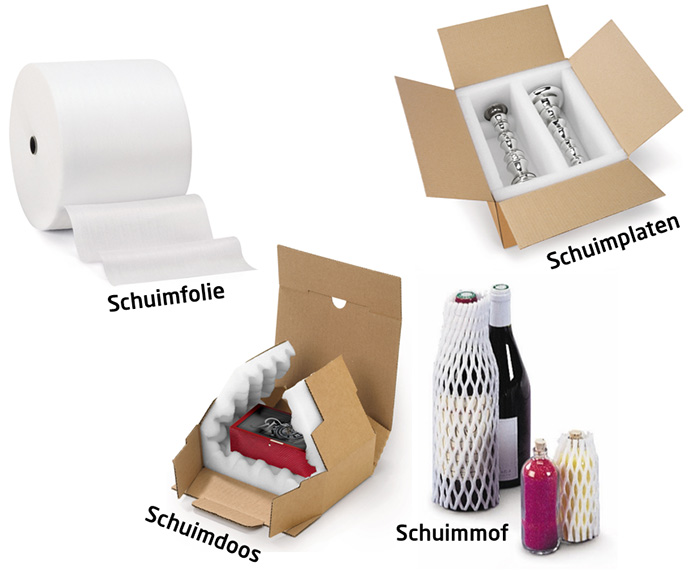
3. Packing with bubble wrap: keep it airy
]The air suspension of this material means you can really protect anything: from light cushioning for smaller items to all-round protection for more fragile items. In the bubble wrap family you will find, among others:
u Bubble wrap on rolls: you probably know them. You cut the film to the perfect size for your use. The strength of the film (which is expressed in microns) determines the best product for which to use it.
| Thickness | Ideal for packing… |
| 50 microns | Light products. |
| 75/80 microns | Heavy items or items with sharp edges. |
| 100 micron | Fragile or heavy items. |
A second element to consider here is the size of the stud:
| Size of the stud | Use it to… |
| ∅ 10 mm | – Protect and ship your light and fragile, medium-weight products. |
| ∅ 25 mm | – Pack your heavy products and items with protruding corners. – Fill the empty gaps in your boxes. – Protect your very heavy products. |
By the way, bubble wrap also exists in the form of pre-perforated sheets. What is the advantage of this? It lets you tear off sheets of the same size quickly, neatly and without any effort. If you often pack items of the same size and only need a standard length of 50 cm or 80 cm, this is the perfect solution for you. You pack smarter, work more cost-efficiently and waste less packaging material.
u Bubble wrap bags: a stop we should definitely not skip are bubble wrap bags. These come in especially handy when shipping smaller items. Since you no longer have to cut them out manually, these bags are real time savers. We recommend you use anti-static bags for delicate and sensitive electronics such as smartphones, computer equipment and electronic components.
